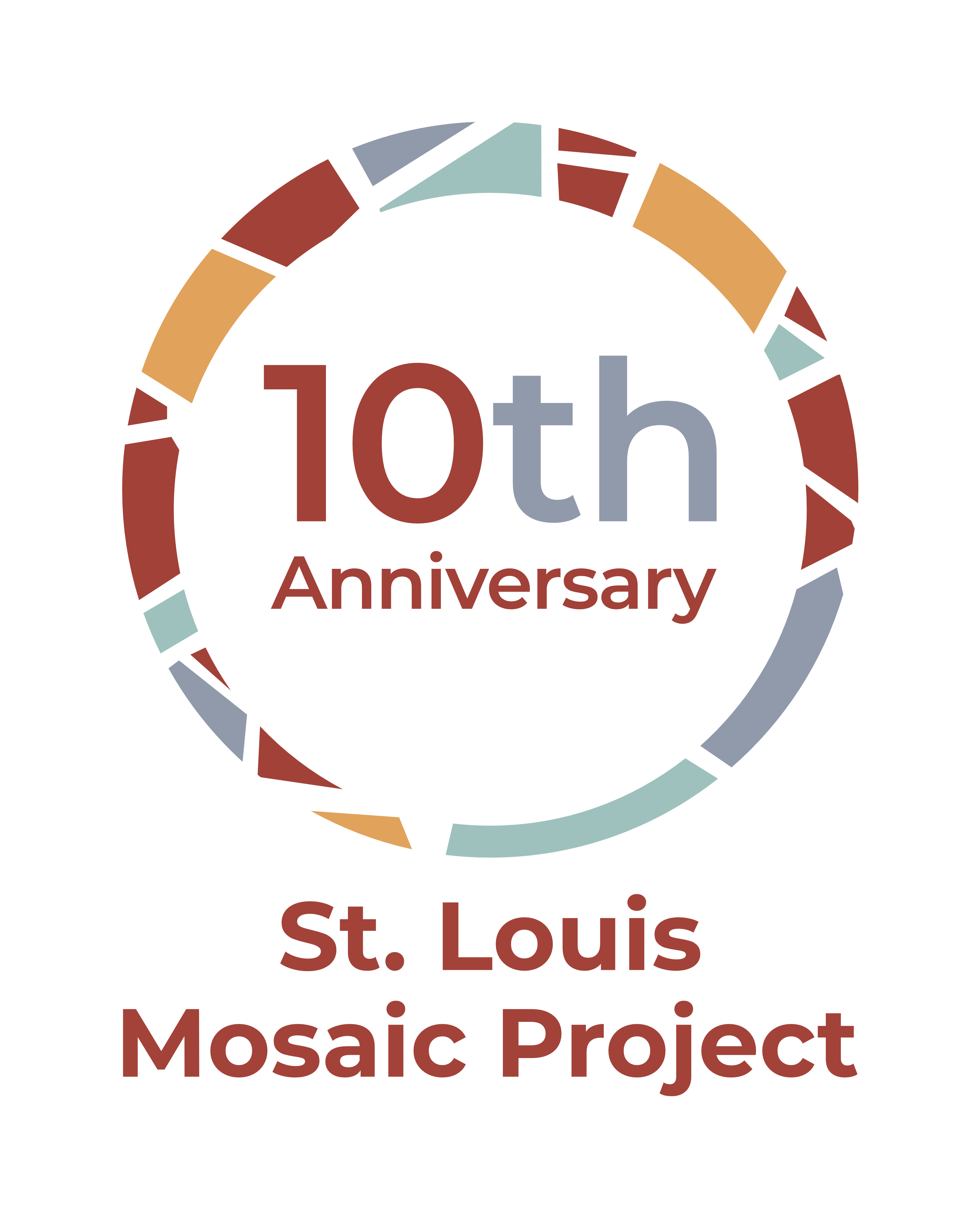
St. Louis Mosaic Project Celebrates 10 Years of Making St. Louis A Welcoming Region for Foreign-Born Community
The St. Louis Mosaic Project Celebrates 10 years of welcoming foreign-born individuals and their families to the region and offering support. On April 18, from 5-7 pm, Mosaic's team and other regional leaders will gather to celebrate a decade of work and more to come. RSVP here. Story below.

March 13, 2023 (St. Louis, MO) – Over the last ten years, hundreds of immigrants have jump started their networking and many have found jobs because of one introduction to a local professional made by the
St. Louis Mosaic Project, an initiative of the non-profit World Trade Center-St. Louis. Today, the St. Louis Mosaic Project announces its 10th year of work toward its goal of transforming St. Louis into the fastest-growing major metropolitan area for immigration by 2025. A celebration will take place on Tue., April 18, from 5-7pm at Mosaic’s office, 120 S. Central Ave., 12th Floor, Clayton, MO. RSVP here.
The Mosaic Project was created in 2013 after two economic impact studies in 2011-2012, funded by the William T. Kemper Foundation and conducted by St. Louis University Economist, Jack Strauss, showed the region to be very low in immigration compared to peer cities and produced recommendations for how to grow the economy by attracting foreign-born individuals.
“The Mosaic Project uses a unique breadth of attraction strategies that have lasting impact for the region’s economic growth,” said Rodney Crim, CEO & President of the St. Louis Economic Development Partnership, parent organization for the World Trade Center-St. Louis and the Mosaic Project.
“I’m proud of the work we’ve done and committed to finding new ways to help foreign-born people settle into meaningful jobs, start or grow their business and discover a community that embraces them,” said Betsy Cohen, Mosaic’s founding executive director.
The region’s foreign-born population is approximately 5% and includes refugees, international students,
re-united family members and entrepreneurs. In 2018, metro St. Louis ranked third among the nation’s top 20 metros for growth of its foreign-born population, according to the U.S. Census Bureau. That increase was lost due to federal policies that dramatically reduced the number of refugees allowed into the U.S. followed by a pandemic that curtailed the ability for international students to obtain visas and flights to study here.
According to the 2020 Census, there are now 130,537 foreign-born people in St. Louis and that upward trend will continue as more refugees are re-settled through the International Institute and as the area’s universities continue to see record enrollment for international students.
The St. Louis Mosaic Project uses grassroots outreach, social media and marketing to educate and inform the business, academic, non-profit and broader community about the significant impact that a diverse, foreign-born population can make for the region’s overall growth. Programs include:
- Professional Connectors: 1:1 warm introductions between work-authorized foreign-born job seekers and professionals that work in their field; there is also a job section that attracts diverse job seekers;
- Ambassadors – annual programming for k-12 schools, companies and individuals that includes information about demographics, immigration issues and ideas that each group can tailor to showcase that they welcome and appreciate diverse employees, clients and customers;
- Entrepreneur support - introducing foreign-born small business owners to the existing ecosystem of programs, mentors, and funding available for business growth and support;
- Social and traditional publicity – 100 media stories are publicized annually to highlight foreign-born successes and those individuals, companies and organizations that align with Mosaic’s;
- Women’s Connector – the International Spouse/Expat Group and International Mentoring Program have more than 900 women from 70+ countries who meet regularly for camaraderie, learning, volunteering, and mentoring;
- Men’s Expat Group
- STL 101 – monthly in person events and webinars where new arrivals can meet locals while learning about St. Louis issues, organizations and other topics of interest.
Mosaic does not charge for its programs, which are invaluable to amplifying the narrative that the region needs foreign-born people to come and how we each have a part to play. In fact, a study from the George W. Bush Institute and Southern Methodist University ranked St. Louis 6th among the top 25 metros where immigrants are thriving and cited both Mosaic and the International Institute as instrumental in that achievement.
In addition to its existing programs, the Mosaic Project is focused on attraction strategies that will grow the Indian and Latino populations which are fueling growth around the country. “We are competing with our peer cities for talent and for people,” said Cohen. “Our attraction plans are designed to signal to the Indian and Latino populations that this is where they should be and this is where they will be embraced and valued.”
